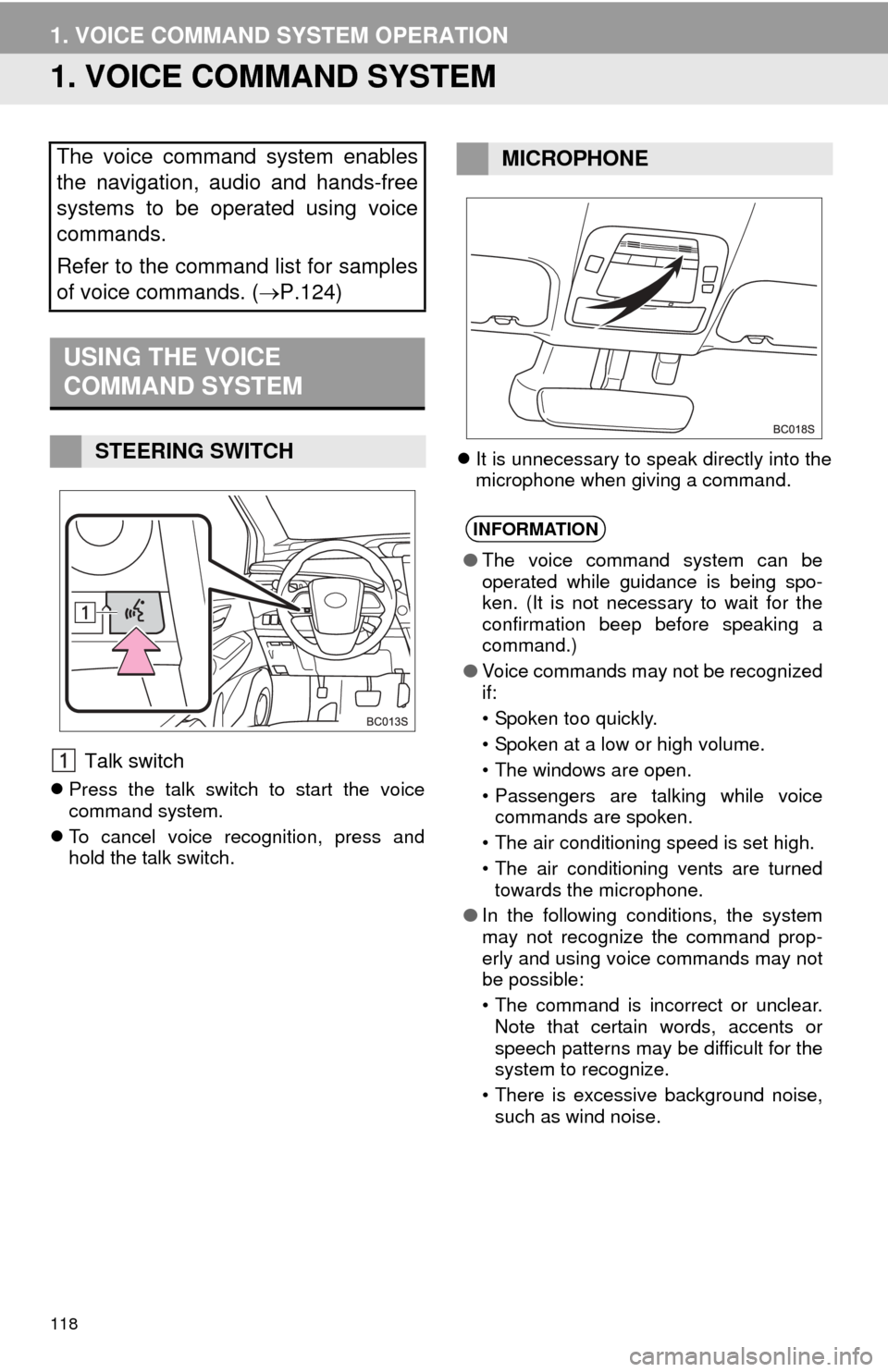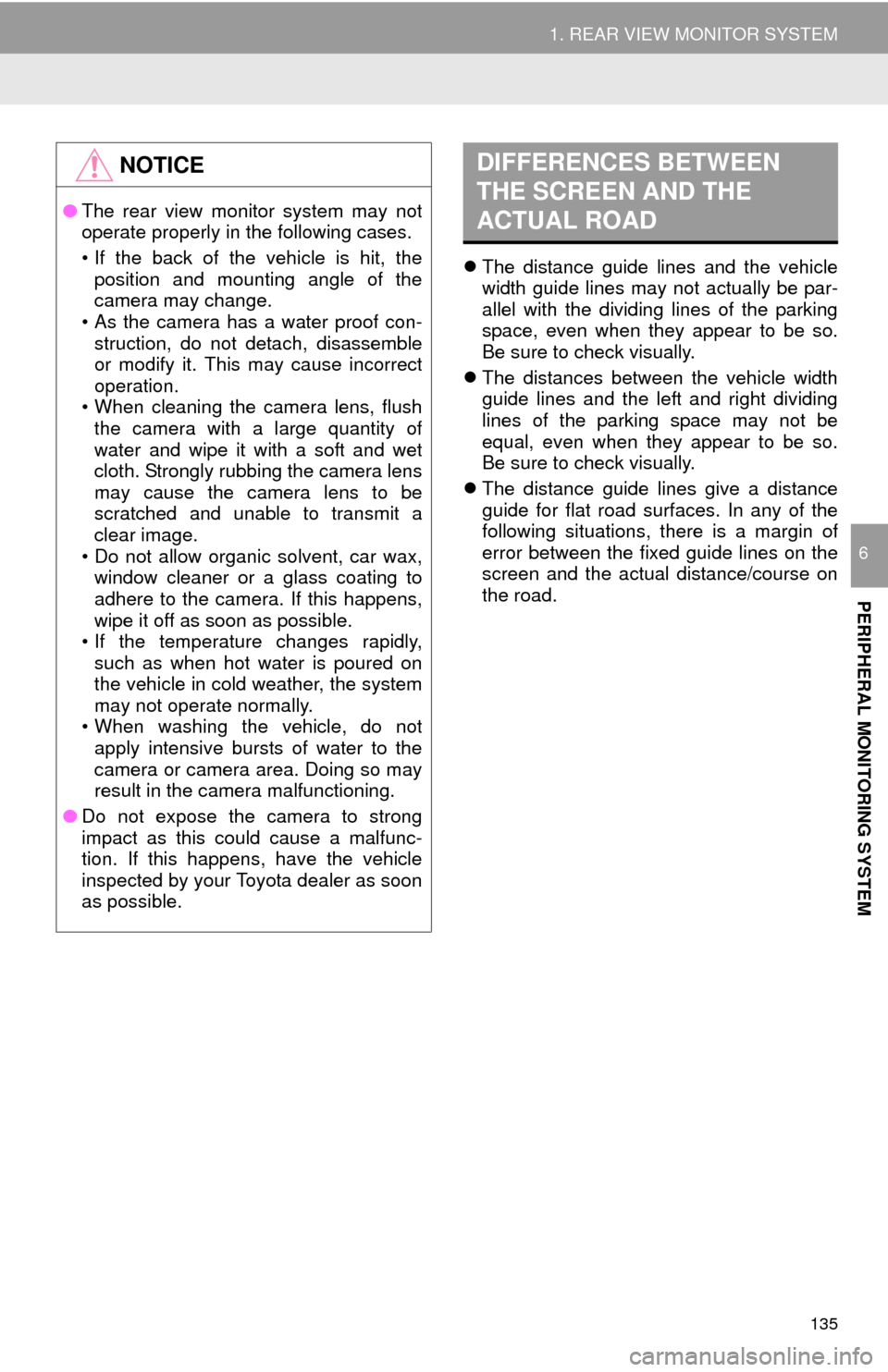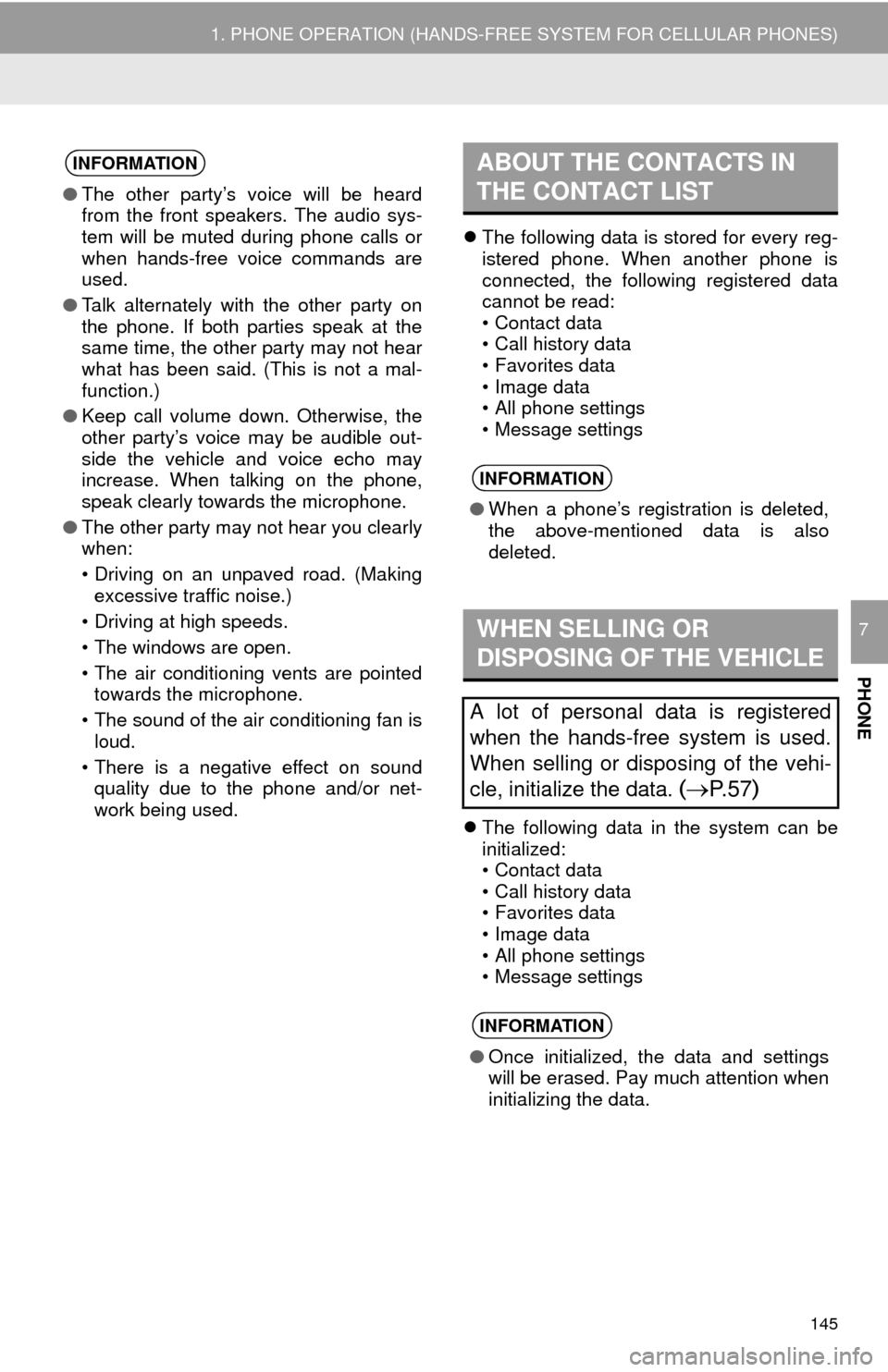window TOYOTA MIRAI 2016 1.G Navigation Manual
[x] Cancel search | Manufacturer: TOYOTA, Model Year: 2016, Model line: MIRAI, Model: TOYOTA MIRAI 2016 1.GPages: 276, PDF Size: 6.65 MB
Page 113 of 276

113
6. TIPS FOR OPERATING THE AUDIO SYSTEM
AUDIO SYSTEM
3
ÔûáCORRESPONDING SAMPLING
FREQUENCY
ÔûáCORRESPONDING BIT RATES
(Variable Bit Rate (VBR) compatible)
´ü¼MP3 (MPEG Audio Layer 3), WMA
(Windows Media Audio) and AAC
(Advanced Audio Coding) are audio com -
pression standards.
´ü¼ Thi
s system can play MP3/WMA/AAC files
on CD-R, CD-RW discs and USB memory.
´ü¼ Thi
s system can play disc recordings com -
patible with ISO 9660 level 1 and level 2
and with th e Romeo and Joliet file system.
´ü¼ When
naming an MP3/WMA/AAC file, add
an appropriate file extension (.mp3/.wma/
.m4a).
´ü¼ Thi
s system plays back files with .mp3/
.wma/.m4a file extensions as MP3/WMA/
AAC files respectively. To prevent noise
and playback errors, use the appropriate
file extension.
´ü¼ Thi
s system can play only the first session
when using multi-session compatible CDs.
´ü¼ MP3 f
iles are compatible with the ID3 Tag
Ver. 1.0, Ver. 1.1, Ver. 2.2 and Ver. 2.3 for -
mats. This system cannot display disc
ti
tle, track title and artist name in other for -
mats.
´ü¼ WMA/
AAC files can contain a WMA/AAC
tag that is used in the same way as an ID3
tag. WMA/AAC tags carry information
such as track title and artist name.
´ü¼ The
emphasis function is available only
when playing MP3/WMA files recorded at
32, 44.1 and 48 kHz.
´ü¼ Thi
s system can play back AAC files
encoded by iTunes.
´ü¼ The s
ound quality of MP3/WMA files gen -
erally improves with higher bit rates. In
order t o achieve a reasonable level of
sound quality, discs recorded with a bit
rate of at least 128 kbps are recom -
mended.
´ü¼ The MP3/
WMA player does not play back
MP3/WMA files from discs recorded using
packet write data transfer (UDF format).
Discs should be recorded using ÔÇ£pre-mas -
teringÔÇØ software rather than packet-write
sof
tware.
´ü¼ M3u pl
aylists are not compatible with the
audio player.
´ü¼ MP3i
(MP3 interactive) and MP3PRO for -mats are not compatible with the audio
player.
File typeFrequency (kHz)
MP3 files: ´Çá
MPEG 1 LAYER 332/44.1/48
MP3 files: ´Çá
MPEG 2 LSF LAYER 316/22.05/24
WMA files: ´Çá
Ver. 7, 8, 9 (9.1/9.2)32/44.1/48
AAC files: ´Çá
MPEG4/AAC-LC11.025/12/16/
22.05/24/32/
44.1/48
File typeBit rate (kbps)
MP3 files: ´Çá
MPEG 1 LAYER 332 - 320
MP3 files: ´Çá
MPEG 2 LSF LAYER 38 - 160
WMA files: Ver. 7, 8CBR 48 - 192
WMA files: ´Çá
Ver. 9 (9.1/9.2)CBR 48 - 320
AAC files: ´Çá
MPEG4/AAC-LC16 - 320
Page 118 of 276

118
1. VOICE COMMAND SYSTEM OPERATION
1. VOICE COMMAND SYSTEM
Talk switch
´ü¼Press the talk switch to start the voice
command system.
´ü¼ T
o cancel voice recognition, press and
hold the talk switch. ´ü¼
It
is unnecessary to speak directly into the
microphone when giving a command.
The voice command system enables
the navigation, audio and hands-free
systems to be operated using voice
commands.
Refer to the command list for samples
of voice commands. ( ´é«P.124)
USING THE VOICE
COMMAND SYSTEM
STEERING SWITCH
MICROPHONE
INFORMATION
ÔùÅThe voice command system can be
operated while guidance is being spo-
ken. (It is not necessary to wait for the
confirmation beep before speaking a
command.)
ÔùÅ Voice commands may not be recognized
if:
ÔÇó Spoken too quickly.
ÔÇó Spoken at a low or high volume.
ÔÇó The windows are open.
ÔÇó Passengers are talking while voice
commands are spoken.
ÔÇó The air conditioning speed is set high.
ÔÇó The air conditioning vents are turned towards the microphone.
ÔùÅ In the following conditions, the system
may not recognize the command prop-
erly and using voice commands may not
be possible:
ÔÇó The command is incorrect or unclear.
Note that certain words, accents or
speech patterns may be difficult for the
system to recognize.
ÔÇó There is excessive background noise, such as wind noise.
Page 135 of 276

135
1. REAR VIEW MONITOR SYSTEM
PERIPHERAL MONITORING SYSTEM
6
´ü¼The distance guide lines and the vehicle
width guide lines may not actually be par -
allel with the dividing lines of the parking
sp
ace, even when they appear to be so.
Be sure to check visually.
´ü¼ The di
stances between the vehicle width
guide lines and the left and right dividing
lines of the parking space may not be
equal, even when they appear to be so.
Be sure to check visually.
´ü¼ The
distance guide lines give a distance
guide for flat road surfaces. In any of the
following situations, there is a margin of
error between the fixed guide lines on the
screen and the actual distance/course on
the road.
NOTICE
ÔùÅ The rear view monitor system may not
operate properly in the following cases.
ÔÇó If the back of the vehicle is hit, the
position and mounting angle of the
camera may change.
ÔÇó As the camera has a water proof con- struction, do not detach, disassemble
or modify it. This may cause incorrect
operation.
ÔÇó When cleaning the camera lens, flush
the camera with a large quantity of
water and wipe it with a soft and wet
cloth. Strongly rubbing the camera lens
may cause the camera lens to be
scratched and unable to transmit a
clear image.
ÔÇó Do not allow organic solvent, car wax, window cleaner or a glass coating to
adhere to the camera. If this happens,
wipe it off as soon as possible.
ÔÇó If the temperature changes rapidly, such as when hot water is poured on
the vehicle in cold weather, the system
may not operate normally.
ÔÇó When washing the vehicle, do not
apply intensive bursts of water to the
camera or camera area. Doing so may
result in the camera malfunctioning.
ÔùÅ Do not expose the camera to strong
impact as this could cause a malfunc-
tion. If this happens, have the vehicle
inspected by your Toyota dealer as soon
as possible.
DIFFERENCES BETWEEN
THE SCREEN AND THE
ACTUAL ROAD
Page 145 of 276

145
1. PHONE OPERATION (HANDS-FREE SYSTEM FOR CELLULAR PHONES)
PHONE
7
´ü¼The following data is stored for every reg -
istered phone. When another phone is
conne cted, the following registered data
cannot be read:
ÔÇó Contact data
ÔÇó Call history data
ÔÇó Favorites data
ÔÇó Image data
ÔÇó All phone settings
ÔÇó Message settings
´ü¼ The following data in the system can be
initialized:
ÔÇó Contact data
ÔÇó Call history data
ÔÇó Favorites data
ÔÇó Image data
ÔÇó All phone settings
ÔÇó Message settings
INFORMATION
ÔùÅ The other partyÔÇÖs voice will be heard
from the front speakers. The audio sys-
tem will be muted during phone calls or
when hands-free voice commands are
used.
ÔùÅ Talk alternately with the other party on
the phone. If both parties speak at the
same time, the other party may not hear
what has been said. (This is not a mal-
function.)
ÔùÅ Keep call volume down. Otherwise, the
other partyÔÇÖs voice may be audible out-
side the vehicle and voice echo may
increase. When talking on the phone,
speak clearly towards the microphone.
ÔùÅ The other party may not hear you clearly
when:
ÔÇó Driving on an unpaved road. (Making
excessive traffic noise.)
ÔÇó Driving at high speeds.
ÔÇó The windows are open.
ÔÇó The air conditioning vents are pointed towards the microphone.
ÔÇó The sound of the air conditioning fan is loud.
ÔÇó There is a negative effect on sound quality due to the phone and/or net-
work being used.
ABOUT THE CONTACTS IN
THE CONTACT LIST
INFORMATION
ÔùÅ When a phoneÔÇÖs registration is deleted,
the above-mentioned data is also
deleted.
WHEN SELLING OR
DISPOSING OF THE VEHICLE
A lot of personal data is registered
when the hands-free system is used.
When selling or disposing of the vehi-
cle, initialize the data.
(´é«P. 5 7)
INFORMATION
ÔùÅOnce initialized, the data and settings
will be erased. Pay much attention when
initializing the data.
Page 241 of 276

241
NAVIGATION SYSTEM
8
6. TIPS FOR THE NAVIGATION SYSTEM
1. GPS (GLOBAL POSITIONING SYSTEM)
The Global Positioning System (GPS) de-
veloped and operated by the U.S. Depart-
ment of Defense provides an accurate
current position, normally using 4 or more
satellites, and in some case 3 satellites.
The GPS system has a certain level of in-
accuracy. While the navigation system
compensates for this mo st of the time, oc-
casional positioning errors of up to 300 ft.
(100 m) can and should be expected. Gen-
erally, position errors will be corrected
within a few seconds.
When the vehicle is receiving signals from
satellites, the ÔÇ£GPSÔÇØ mark appears at the
top left of the screen.
The GPS signal may be physically ob-
structed, leading to inaccurate vehicle po-
sition on the map screen. Tunnels, tall
buildings, trucks, or even the placement of
objects on the instrument panel may ob-
struct the GPS signals.
The GPS satellites may not send signals
due to repairs or improvements being
made to them.
Even when the navigation system is re-
ceiving clear GPS signals, the vehicle po-
sition may not be shown accurately or
inappropriate route guidance may occur in
some cases.LIMITATIONS OF THE
NAVIGATION SYSTEM
This navigation system calculates the
current position using satellite signals,
various vehicle signals, map data, etc.
However, an accurate position may not
be shown depending on satellite condi-
tions, road configuration, vehicle con-
dition or other circumstances.
NOTICE
ÔùÅ The installation of window tinting may
obstruct the GPS signals. Most window
tinting contains some metallic content
that will interfere with GPS signal recep-
tion of the antenna in the instrument
panel. We advise against the use of win-
dow tinting on vehicles equipped with
navigation systems.